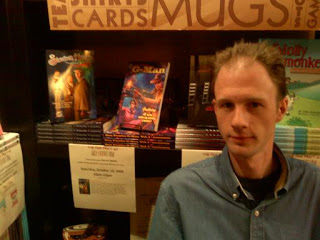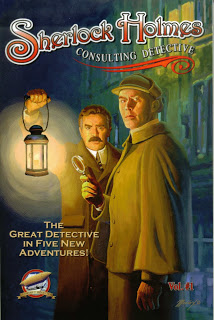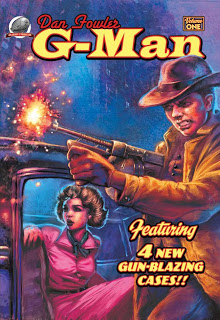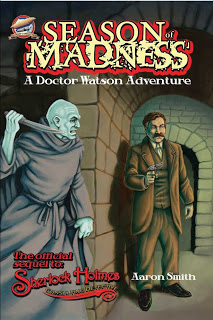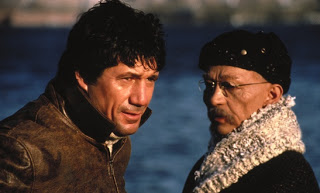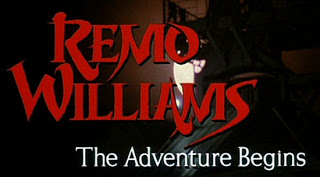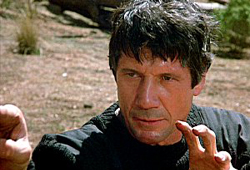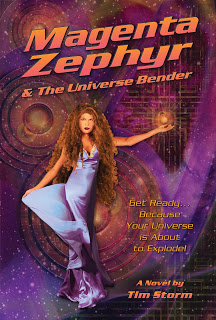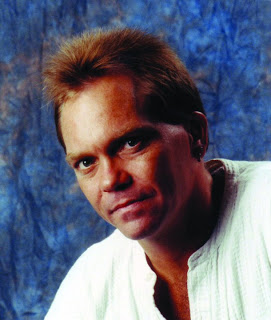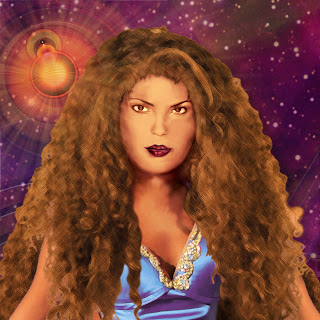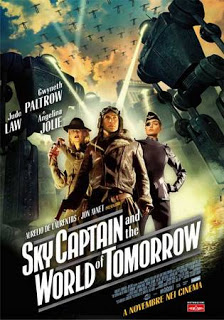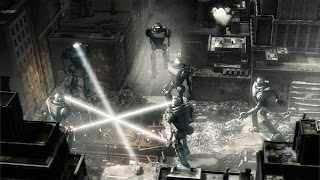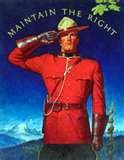Tagged: Star Trek
REMO WILLIAMS playing at THE LONG MATINEE!!!
THE LONG MATINEE-Movie Reviews by Derrick Ferguson
REMO WILLIAMS: THE ADVENTURE BEGINS
Produced by Larry Spiegel and Dick Clark
Review: ‘Pretty Maids all in a Row’
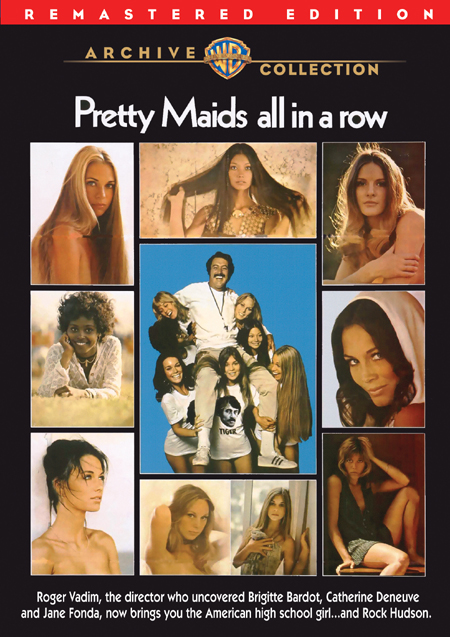 Before he was canonized as a futurist, Gene Roddenberry was a failed Hollywood producer, having watched two series crash and burn after short-runs on prime time television. He began shifting his focus from[[[Star Trek]]] during the series’ third season, working for his buddy Herb Solow at MGM. In 1970, Solow asked Roddenberry to take on a problematic script, an adaptation of a novel by Francis Pollini called[[[ Pretty Maids all in a Row]]]. It was to be the American film debut of director Roger Vadim, fresh off his pop culture hit [[[Barbarella]]].
Before he was canonized as a futurist, Gene Roddenberry was a failed Hollywood producer, having watched two series crash and burn after short-runs on prime time television. He began shifting his focus from[[[Star Trek]]] during the series’ third season, working for his buddy Herb Solow at MGM. In 1970, Solow asked Roddenberry to take on a problematic script, an adaptation of a novel by Francis Pollini called[[[ Pretty Maids all in a Row]]]. It was to be the American film debut of director Roger Vadim, fresh off his pop culture hit [[[Barbarella]]].
The story of a series of murders at a California high school was blended with sexual hijinks as one story featured a guidance counselor who was bedding as many comely teenagers as possible and a sexually frustrated student who couldn’t stop getting excited at all the braless wonders in their teasingly short skirts. For a major studio production, it was one of the first to freely feature copious amounts of onscreen nudity and can be seen as a precursor to the sexual romps seen in the smarter [[[Animal House]]] and raunchier [[[Porky’s]]].
Roddenberry wrote and produced the adaptation, which was a good fit for the randy man who also had a well-known eye for a pretty face. Matched with Vadim, who shot his cast lovingly, this should have been an intelligent, funny bit of entertainment instead of a vapid train wreck. The movie, released this week for the curious by Warner Archive, can be seen as a cult favorite or as a glimpse into Roddenberry’s skills before his unsuccessful string of pilots that marked his 1970s (and all of which are now out from Warner Archive).
The film has an A-list cast fronted by Rock Hudson and the gorgeous Angie Dickinson as faculty and a pre-Kojak Telly Savalas as the investigating detective. The cast also includes familiar faces like Roddy McDowell, Keenan Wynn, and for the Trekkies among us: William Campbell and James Doohan. ComicMix fans can check out the future Isis, JoAnna Cameron in an early role. William Ware Theiss was unfettered for the costume design and he made sure to show off the sexiest, skimpiest contemporary fashions that few high schools at the time would have ever allowed.
PULP ARTIST’S WEEKEND-TIM SALBER INTERVIEW
AP: Salber? Is that French? How did you meet Tim Storm? Are you old school chums?
I’ve been working with my partner, Barry, to mix some of the studio tracks that we recorded through the years and we hope to release a CD of the Imposters’ music sometime in the next year.
As for movies, I am thrilled by the proliferation of superhero-based films and I’m really looking forward to all the new Marvel hero movies that are planned for release in the coming years. Modern computer animation has made so many things possible on film that just couldn’t be done before, and I really enjoy any film that incorporates some of that amazing imagery. Lord of the Rings, Peter Jackson’s King Kong, The Transformers, X-Men . . . I just love all that stuff!
I’ve created an online version intended to be an eternally expanding collection of new and original quotations; simple adages with profound insight into the mysteries of the universe, whether sublime or mundane. All visitors to the site are encouraged to submit their own contributions, as well as to browse through the existing entries. A couple sample entries:
TS: The biggest challenge in completing the book was finding the time to write while
working full-time and keeping up with other daily obligations. It’s also difficult, as an author, to find that fount of inspiration and maintain enthusiasm for writing while dealing with the pressures that we face in this modern world. They’re the same challenges we all face, day to day, in motivating ourselves, setting priorities, taking care of our responsibilities, and making time to do what’s most important to us.
AP: What did you learn about writing you didn’t know before?
AP: What’s next for you as a writer?
AP: Thanks again, Tim, for graciously allowing us the opportunity to interview you on behalf of ALL PULP! Good Luck and God Bless You on your current and future endeavors!!
TS: My pleasure, Sarge! I really appreciate the opportunity to share my love of the pulp genre and shamelessly plug my book!
Review: ‘DC Comics Year by Year’
DC Comics Year by Year: A Visual Chronicle
By Alan Cowsill, Alex Irvine, Matthew K. Manning, Michael McAvennie, Daniel Wallace
352 pages, DK Publishing, $50
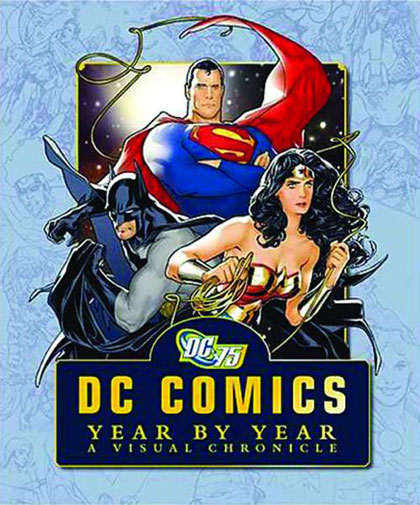 This is a tough book to review given growing up reading the majority of titles covered here in addition to working on staff for twenty years plus continuing to contribute to the company today. It’s also a book I wish I had written. That said, this is a mighty undertaking that is strong and eminently readable. This is a worthwhile 75th anniversary collector’s item and a great way to encapsulate DC Comics’ rich history. By all means, this belongs on your bookshelf.
This is a tough book to review given growing up reading the majority of titles covered here in addition to working on staff for twenty years plus continuing to contribute to the company today. It’s also a book I wish I had written. That said, this is a mighty undertaking that is strong and eminently readable. This is a worthwhile 75th anniversary collector’s item and a great way to encapsulate DC Comics’ rich history. By all means, this belongs on your bookshelf.
It is almost impossible to properly encapsulate the 75 years of DC Comics alone but this book also attempts to weave in the histories of the companies or properties now owned by DC, including Fawcett’s super-heroes, Charlton’s Action Heroes, and the Quality Comics library. Unfortunately, these all get lip-service rather than a proper meshing of titles therefore significant publications are absent.
DC Comics began as one title, New Comics, released in 1935 by Major Malcolm Wheeler-Nicholson. It added titles slowly and when there was a disagreement over the size of the company, Jack Liebowitz, who bought out Wheeler-Nicholson with Harry Donenfeld, decided to expand in partnership with Max Gaines, forming All-American Comics. It would be years before Gaines sold out and the two companies became National Comics.
When Quality went out of business in the 1950s, DC took over their titles, continuing several of them, notably [[[G.I. Combat]]] and [[[Blackhawk]]], without missing a beat. In the 1970s, DC acquired rights to their heroes, from Captain Marvel to Spy Smasher, fully coming to own them within a decade. And as a gift to their executive editor, Dick Giordano, DC also acquired the Charlton heroes that Giordano once edited, headed by Captain Atom. When Bill Gaines died, DC became the parent to Mad, but the EC line of titles from [[[Picture Stories from the Bible to Weird Science]]] are missing. The purchase by DC of WildStorm changed the company. You’ll see some of this throughout the year-by-year presentation.
We get anywhere from one to two spreads per year when many years were bursting and deserved twice the space. Unfortunately, as happens with these DK projects, entire spreads are devoted to cover or panel blow-ups that unnecessarily take up space. As a result, you may scratch your head at the emphasis given to some titles and the absence of others.
National Graphic Novel Writing Month, Day 15: Plotting Your Way Out Of A Paper Bag
 Let me give you an example of a bad plot that you’re already familiar with– the story of William Tell.
Let me give you an example of a bad plot that you’re already familiar with– the story of William Tell.
The legend has it that William Tell was known as an expert shot with the crossbow. In his time, the new ruler of his land raised a pole in the village’s central square, hung his hat on top of
it, demanding that all the townsfolk bow before the hat. When Tell
passed by the hat without bowing to it, he was arrested. As punishment,
he was forced to shoot an apple off the head of his son.
Otherwise, both would be executed. Tell was promised freedom if he
successfully made the shot.
Now, ladies and gentlemen– do you think there’s any doubt that he made the shot? Of course he did.
In history, this is an exciting moment, because you don’t know if a real person could do it. But in fiction? BORING.
Why? Because in fiction, you can have your characters do anything. They can be good enough or lucky enough to make the shot because the author says he’s lucky enough to make the shot. There is no suspense there.
I’ve said before that one of the things that drives me nuts about most fantasy novels, and a problem that I discovered when first writing Star Trek
stories, is that any story that you can technobabble your way into to,
or technobabble your way out of, is inherently boring. It’s make
believe. There’s absolutely no tension, the writer will wave his wand
and make everything come out. There’s nothing to resolve.
By contrast, any story with an choice – what do you do and
why? – has interest. Think about all the stories that haunt you, and
you’ll find that there’s often a choice that’s presented in the story,
and you revisit the story because the dilemma is still not fully
resolved in your own head.
This was brought home for me a few years back watching Star Wars— the real one, thank you– in a theater. The audience applauded and cheered like crazy during the final attack on the Death Star, but they surprised me by applauding the most during what I thought was the pivotal moment.
Quick now– you know the scene. What’s the pivotal moment?
The death of Biggs or Porkins? Spurs him on, sad, but no.
Blowing up the Death Star? Anticlimax. Go back earlier.
The death of Red Leader? Closer. Luke takes over command because there’s nobody else to take over at that point, and he chooses to do so, but that’s not much of a choice when every commander above him has been taken out.
No– the crowd went wild when Luke turned off his targeting computer. He chose to accept the world around him, and to take faith in his own abilities to solve the problem. No crutches, just him.
And then it’s followed up by the second great cheer, when Han Solo chooses to come back and join the fight just in time to save Luke’s hash, when Han chooses to be about something more than money.
Make your characters work for a choice, show how they change to get there– and you have a story worth telling.
So– it’s Day Fifteen. Half way through the month. How are you doing?
Remember: you can follow all the NaGraNoWriMo posts here!
National Graphic Novel Writing Month, Day 12: Comic Scripts AREN’T Screenplays, by David Alan Mack
 Day twelve of NaGraNoWriMo, and we’re bringing in some fresh voices to add their expertise. First up is David Alan Mack, the national bestselling author of nearly twenty books, including Wildfire, Harbinger, Reap the Whirlwind, Road of Bones, and the Star Trek Destiny trilogy (Gods of Night, Mere Mortals, and Lost Souls) as well as a writer for television and– most important for our work today– the writer of the Farscape: Scorpius comic for BOOM!
Day twelve of NaGraNoWriMo, and we’re bringing in some fresh voices to add their expertise. First up is David Alan Mack, the national bestselling author of nearly twenty books, including Wildfire, Harbinger, Reap the Whirlwind, Road of Bones, and the Star Trek Destiny trilogy (Gods of Night, Mere Mortals, and Lost Souls) as well as a writer for television and– most important for our work today– the writer of the Farscape: Scorpius comic for BOOM!
My first training as a scriptwriter was a screenwriting
101 course I took more than 25 years ago. In that class I learned the
fundamentals of writing for motion pictures and television, and I refined my
understanding of those forms a few years later during my studies at NYU’s film
school. Nearly a decade later, after three sales to the Star Trek: Deep Space Nine and Star
Trek Voyager television series, I had to unlearn most of what I knew about
scriptwriting when I got a chance to write for the Star Trek comic books, then produced by the now-shuttered
WildStorm.
A lot of scriptwriters make the mistake of thinking that
if one knows how to write teleplays or screenplays, that comic books are just
the same thing without the constraints of a limited budget or an overworked
visual-effects department. After all, they both describe stories pared down to
images, sounds, and dialogue. However, the two forms differ on a few very
important points.
The first key difference is how the two formats break up
the narrative. A screenplay or teleplay simply has scenes, which might or might not be subdivided into shots. Scenes can start or end anywhere
on the page. It’s a minimalist format intended to serve as the blueprint for a
story while affording the production team great latitude for interpretation.
A comic-book script needs to break up its story into pages, and those are further broken up
into panels. As a general rule, a
page should be treated as a discrete storytelling unit, which is a fancy way of
saying don’t start or end a scene in the middle of a page. It’s also important
not to clutter a page with too many panels, or to crowd a panel with too many
lines of caption or dialogue text.
SKY CAPTAIN-REVIEWED BY DERRICK FERGUSON AT THE LONG MATINEE!
THE LONG MATINEE- Movie Reviews by Derrick Ferguson
2004
Paramount
Produced by Jon Avnet
Written And Directed by Kerry Conran
In doing my research prior to writing this review I discovered that Kerry Conran originally wanted to do this movie with unknown actors and break it up into ‘chapters’ and present it as if it were a lost serial from the 1930’s that had recently been discovered. I would really have liked to see that version of SKY CAPTAIN AND THE WORLD OF TOMORROW since I think he could have pulled it off. As anybody who’s read my work knows, I’m a full out geek when it comes to the blood and thunder pulps of the 1930’s and 1940’s and Saturday morning serials and 90% of my work is written in the tradition of the pulps. As I watched SKY CAPTAIN AND THE WORLD OF TOMORROW I realized that I had a spiritual brother in Kerry Conran. I don’t often recommend that people see a movie just for the way it looks but SKY CAPTAIN AND THE WORLD OF TOMORROW is one of those movies. It’s an out-of-body experience that truly takes you into another world and despite what I think are some flaws that prevent it from being quite as good as such great pulp inspired films such as The Indiana Jones movies “The Rocketeer” “The Phantom” and “Buckaroo Banzai” it’s an astounding adventure movie that proves what I’ve been saying for years: pulp action adventure is alive and well and if presented in the right way, people will eat it up.
The look of the movie is achieved through the means of almost total CGI. Except for the actors, their costumes and some of the sets, nearly everything else is a digital creation and the results are simply astounding in evoking a 1939 that only existed in the pages of pulp magazines and serials and could only be realized now. There’s a certain irony in the fact that the best way to visualize a world of the past is by means of a futuristic technology but it works. Boy, does it ever work.
SKY CAPTAIN AND THE WORLD OF TOMORROW takes place in an alternate Earth where the Second World War has obviously never happened. We can tell that right from the beautiful opening sequence where The Hindenburg III docks at The Empire State Building. That huge tower on the top was designed exactly for that purpose in our reality but after it was built it was discovered that the high winds would make dirigibles move around too much and make it impossible for passengers to disembark. But in this world they’ve obviously overcome that problem. Aboard The Hindenburg is Dr. Vargas (Julian Curry) who is on the run from sinister forces who have been kidnapping the world’s leading scientists and he’s next on the list.
He’s come to New York to warn his colleague, Dr. Jennings (Trevor Baxter) who in turn contacts the crack reporter of The New York Chronicle, the wonderfully named Polly Perkins (Gwyneth Paltrow) and informs her that he was once a member of a mysterious group known as Unit 11 who worked for a Doctor Totenkopf (Sir Laurence Oliver in archival footage) who worked on projects that were “too horrible to speak of” It’s during their meeting that New York is attacked by an army of giant flying robots that proceed to steal the city’s generators. There’s only one chance for the city to survive and the call goes out for Joe Sullivan aka Sky Captain (Jude Law) to come and save the day in his customized, pimped-out P-40 Warhawk which he does in a breathtaking sequence that sets the tone for the rest of the movie.
Turns out that Sky Captain is the only hope to find out where these giant robots are coming from and why they’re attacking cities all over the entire world for their generators. Sky Captain is ably backed up by his own private army and his faithful sidekick, Dex (Giovanni Ribisi) who judging from his speech patterns and technological genius must be an ancestor of Star Trek’s Mr. Spock. Polly insists on going along the adventure and it turns out that she and Sky Captain had a wild romance in the past that resulted in her sabotaging his beloved plane. That led to him being held in a prison for six months so there’s a certain amount of friction there that leads to some entertaining banter between the two as they go off on a world-wide quest for Tontenkopf’s secret base to stop his mad schemes. They’re followed by The Mysterious Woman (Bai Ling) who is Totenkopf’s enforcer and seeks to stop them. Along the way Sky Captain and Polly get the help of Franky (Angelina Jolie) the eye patch wearing commander of a fleet of aerial aircraft carriers and they assault Dr. Totenkopf’s island fortress in a last ditch effort to save the world.
SKY CAPTAIN AND THE WORLD OF TOMORROW is a great movie for those of us who love the pulps and those of us who have no idea of what the pulps were and want to know. Jude Law, Gwyneth Paltrow and Angelina Jolie do an absolutely bang-up job in their roles and considering they were working on sets where they had to imagine what they were seeing, they do a great job. I really liked Angelina Jolie’s work in this movie and I bet if you ask her she’d admit that she’s a fan of Jim Steranko’s “Nick Fury, Agent of S.H.I.E.L.D.” since her role is practically a 1930’s female version of that character. There’s a fantastic scene where she and her squadron of ace pilots dive into the ocean and we see that their planes can also become submarine fighters that had me jumping up and hollaring like a maniac. And I won’t even tell you the scene that happens after that when she has to take out a giant robotic crab monster protecting Totenkopf’s island.
But SKY CAPTAIN AND THE WORLD OF TOMORROW does have some major flaws. First is that even though Sky Captain is the hero he never has a real enemy to face off with. Dr. Totenkopf is played by Sir Laurence Oliver who died before the movie was made and so only appears either in footage that has been CGI’ed. And The Mysterious Woman looks as if she might be a formidable enemy but she and Sky Captain never have a real emotional or physical conflict. Near the end of the movie, The Mysterious Woman and Sky Captain square off in a battle that looks as if we’re going to get some real ass-kicking action but it doesn’t happen. It’s resolved in a manner that had me saying; “That’s IT?!”
Another thing that had me puzzling over is that early in the movie it’s said that the nations of the world have to rely on Sky Captain and his private army to find Totenkopf since their armies are engaged in other conflicts. Well, if in this world there’s no World War II then what conflict is going on that would prevent the world powers from sending their armies after Totenkopf. And I also didn’t like how near the end where Sky Captain and Polly have been busting their asses to save Dex for nearly 30 minutes of the movie’s running time Dex shows up to save them and he explains how he escaped in an unconvincing offhanded manner.
And the movie doesn’t have the headlong adrenaline rush of the Indiana Jones movies or “The Rocketeer” or “The Phantom”. It’s a good movie, don’t get me wrong…but it’s obvious that the director is more in love with getting the look and feel of the movie right more than the action elements. But you just can’t beat the scene in
The performances in the movie are also worth mentioning. SKY CAPTAIN AND THE WORLD OF TOMORROW was part of the Jude Law Film Festival of 2004 where it seemed as if every other movie that hit the screens that year starred Jude Law. He’s really good in this one as he plays it absolutely straight. His daredevil pilot Joe Sullivan would have been right at home in a Howard Hawkes movie like “Only Angels Have Wings” and I loved how during the underwater fight scene Angelina Jolie was grinning like a kid on Christmas while wearing a helmet I’m positive was inspired by Wally Wood.
So should you see SKY CAPTAIN AND THE WORLD OF TOMORROW? Without a doubt. It’s an excellent movie simply on a technical level in that it brings to life a world that I love with my whole heart and I try to recreate in my work. I would advise you to see The Indiana Jones movies or “The Rocketeer” or “The Phantom” if you want to know what the action and energy of the pulps and Saturday Morning serials felt like but see SKY CAPTAIN AND THE WORLD OF TOMORROW if you want to know what the pulps and Saturday morning serials looked like.
106 minutes
Rated PG
Review: ‘Doctor Who The Visual Dictionary’
Doctor Who The Visual Dictionary
By Neil Corry. Jacqueline Rayner, Andrew Darling, Kerrie Dougherty, David John and Simon Beecroft
144 pages, DK Publishing, $24.99
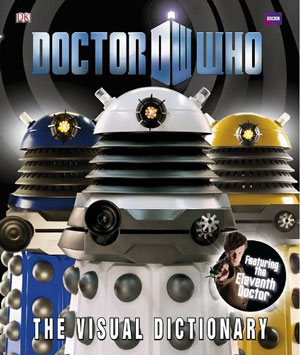 Your first thought is, why on earth are we reviewing this book when it came out last year? The answer is – because this is a brand new edition, incorporating only some of the previous edition’s material and thoroughly revised to incorporate the known exploits of the eleventh Doctor.
Your first thought is, why on earth are we reviewing this book when it came out last year? The answer is – because this is a brand new edition, incorporating only some of the previous edition’s material and thoroughly revised to incorporate the known exploits of the eleventh Doctor.
The problem with fact books based on ongoing franchises is that almost immediately, the facts are outdated. Wisely, this new volume covers the entirety of the fifth season of the current version of the BBC’s perennial [[[Doctor Who]]] and is being released in that fallow period between the season ending and the Christmas Special.
Interestingly, Matt Smith’s Doctor is merely an insight to the brightly colored Daleks fronting this book, which is in the traditional large DK guidebook side. The Doctor’s equipment, friends, and foes certainly deserve large pages in which to luxuriate in the minutia. And boy is there plenty of detail here. Taking a cue from the [[[ Star Trek]]] tech manuals, the multitude of authors provide pseudo-scientific explanations to how things work. We get a nice double-gatefold examining the TARDIS and now we know what each station does. Yet, the cut-aways for the new Sonic Screwdriver do not give us any idea where the readout display goes.
Visually, the book covers the five seasons beginning with the Christopher Eccleston revival, heavily favoring the current Matt Smith era. The text, however, delves through the years with some information dating back to the earliest days of the Doctor so fans of the entire series will appreciate the acknowledgment of the past.
There, of course, can be quibbles. Some 20 pages are spent on the Daleks in all their colorful glory while the Doctor and his eleven incarnations get a mere six pages. Torchwood is under-represented as is dear old Wilf.
In some cases, we learn more about the alien races here than we ever did on the series, which enriches them to a degree. The photography and layout is visually engaging and clean to comprehend which is greatly appreciated.
If anything is missing, is some sort of timeline, establishing the various eras and worlds visited by the Doctors, which probably deserves a book of its own. This is a fine collection to flip through and cherish until the next edition rolls out. You have to love the Doctor to fully appreciate this treasure trove of information but most of us here at ComicMix fall into that category. Be sure to tell Santa you want this.
NEW QUIZ FROM SARGE’S P.O.P QUIZ CENTRAL!!
- Hal Foster or Alex Raymond?
- Little Nemo or Popeye?
- The Magnificent Seven or Seven Angry Men?
- Dennis the Menace or Peanuts?
- Jack Kirby or Steve Ditko?
- Gil Kane or Neal Adams?
- Gil Kane or Bob Kane?
- Wayne Boring or Paul Reiman?
- Joe Kubert or Jerry Robinson?
- John Buscema or Johnny Romita?
- Will Eisener or Jules Feiffer?
- Jay Piscopo or Delfin Barral?
- Wally Wood or Mark Wheatley?
- Battle Star Galactica or Star Trek?
- Seascapes or Still Life?
- Nik Poliwko or Lawrence Leeson?
- Monopoly or Clue?
- Carl Barks or Walter Lantz?
- Art Deco or Craftsman?
- Evan Quiring or Del Hewitt, Jr.
- Law & Order or Dragnet?
- Flash Gordon or Buck Rogers?
- Dave Lung or Danny De Bruin?
- Twin Earths or Lost In Space?
- Jeremy Billadeau or Mike Spicer?
- Danny Kelly or Pete Hernandez II?
- Addams Family or the Munsters ?
- Jim Steranko or Peter Max?
- Desperate Housewives or All My Children?
- James Bama or Frank Frazetta

